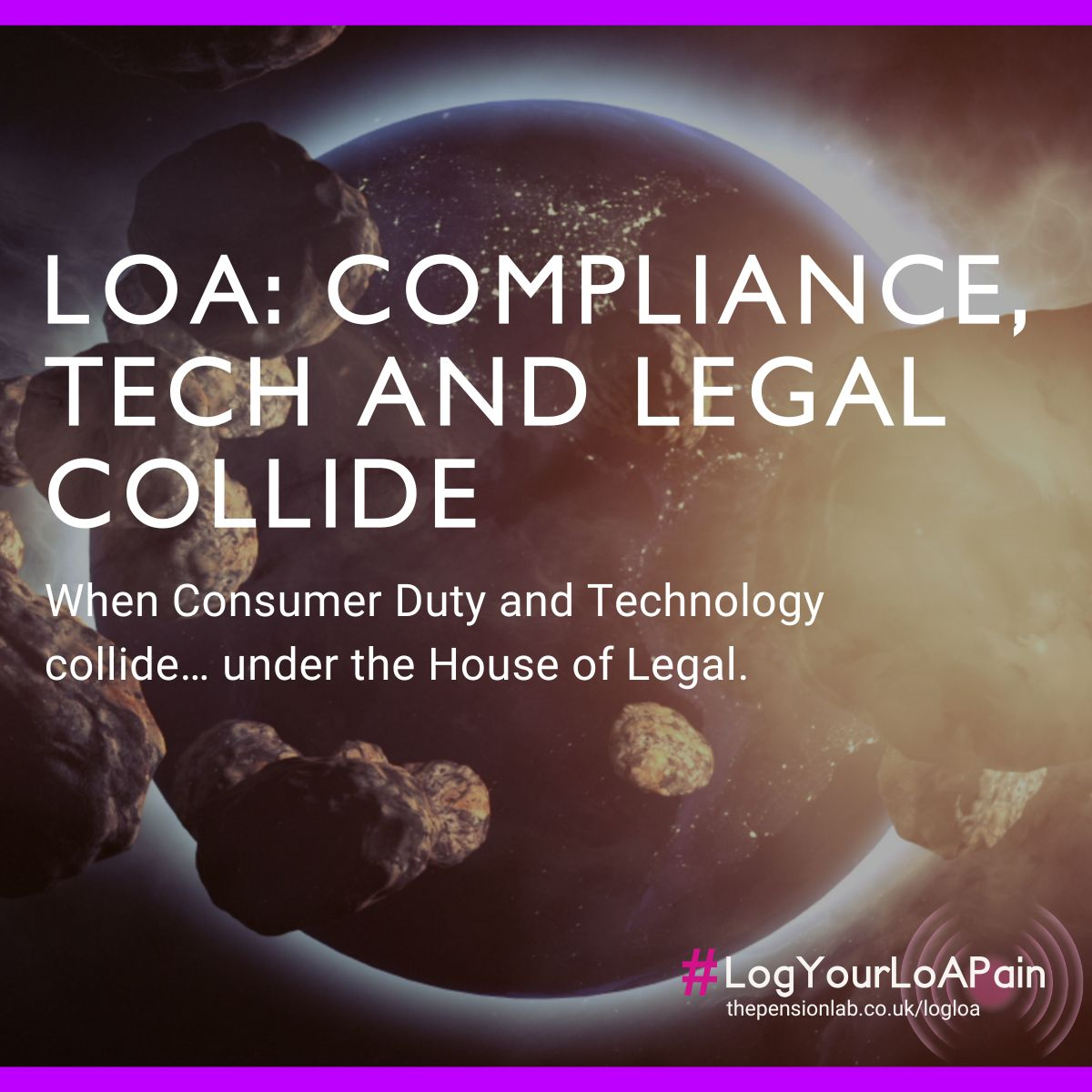In the labyrinthine world of financial services, a seemingly innocuous document, the Letter of Authority (LoA), emerges as a focal point where the realms of the Financial Conduct Authority’s (FCA) Consumer Duty rules and technology converge under the strong hand of the Law. Ostensibly simple – an authorisation letter empowering a designated person (the planner / adviser) – the LoA's significance amplifies when navigating the intricate landscape of financial advice.
At its core, the LoA is a legal instrument, residing firmly within the House of Legal, distinct from the domains of regulation and compliance. Tasked with risk mitigation, this House grapples with outdated wet signature requirements, postal correspondence, and as such experiences more of its fair share of archaic processes.
The rising movement between Consumer Duty and digital servicing, however, casts a looming shadow, demanding a reevaluation of conventional LoA practices.
While the LoA facilitates the delegation of authority, it is not a one-way street. The letter being sent may contain several requests including change and confirmation of authority and also information specific to the plan and policies the client holds with that particular scheme, provider and platform. In most cases, there will be multiple letters issued to various providers on behalf of the client.
The request nature of this type is not unique to our industry processes and practices. Information exchange is a crucial and a BAU facet, necessitating processing by providers, schemes, and platforms through the help of technology and people - and for processes like valuations / contract enquiries can happen multiple times a day. However, there are factors particular to the LoA request process that make the response back process more complex than others.
In order to respond and act on the request, stringent identity verification and security checks are required on a possible new entity - the adviser - to which potentially no previous relationship exists. These checks must satisfy and comply with risk, legal and regulatory standards.
Once checks are satisfied, the work begins in making the change of agency and then collation of the information requested, with potentially multiple different systems being accessed.
Presenting back information of various policy and plan types in a format that works across multiple systems and that which can be securely sent back, as recognised by Legal, further complicates the response back process.
Triggered by the supplied information, the review by the adviser commences and may introduce changes to policies or plans, ranging from additional contributions to transfers and consolidation.
For the provider and scheme, that’s a lot of work, and it’s easy to assume that it’s work leading to possible business loss or gain. Whichever direction the eventual changes take, from an operational perspective, the process should be as efficient as possible – that includes security.
From the client’s perspective, Consumer Duty rules prevail. Most notable rules that the LoA process can rub up against are “Avoid Causing Foreseeable Harm” and “Enable and Support Customers to Pursue Their Financial Objectives” if not handled in a timely manner or response is incomplete.
Complicating matters further, the regulatory landscape is divided between two entities: the Financial Conduct Authority (FCA) and The Pension Regulator (TPR). Consumer Duty falls under the purview of the FCA, leaving the trust-based sphere of TPR exempt. The resulting inconsistency of service and, as highlighted in an article on Professional Adviser (https://www.professionaladviser.com/news/4155845/adviser-argues-tpr-fca-merger-consumer-duty-failure), underscores the potential impact on advisory services and client outcomes.
Combining regulatory pressures and inconsistent complexities with the ever-evolving landscape of technology, pressure is building on pensions to align with consumer expectations. The demand for seamless technological experiences, akin to those in banking, prompts a critical question: Has the (pensions LoA) legal realm kept pace with the advancements in ID verification techniques, such as facial recognition, voice authentication, and even two-step authentication?
In this recent article What is Open Banking in Finextra (https://www.finextra.com/blogposting/25449/what-is-open-banking) the way we (the general public) manage our authority over our money was named at the second most revolutionary benefit of Open Banking – enabling the consumer to digitally and instantly, grant and revoke access. Coincidently, the first revolutionary benefit was “Cooperating to Generate Superior Concepts” – the primary principle of the #LogYourLoAPain initiative which is founded wholly on a collaborative approach to improving the LoA process.
Open Banking to the impending arrival of Pensions Dashboards only intensifies the need for progress. Once pensions data is surfaced, and authority is managed directly by the consumer to provide access to their adviser, it will become even more apparent that the archaic reliance on wet signatures is outmoded. The wet signature, especially at the New Business and/or Account Opening stages is already, for some, a thing of the past. There is no doubt that the removal of wet signatures from these processes signals a shifting paradigm, favoring efficiency thanks to technology, over tradition.
Yet, within the complex tapestry of financial services, the LoA process stands as a multifaceted challenge, impacting a provider's operations. Striking a delicate balance between regulatory compliance and consumer expectations in the digital age becomes imperative. The era of the wet signature is undoubtedly behind us, demanding an innovative and secure approach to process the Letter of Authority.
As the industry grapples with these challenges, a call emerges for a reimagining of the LoA process. This entails not only keeping pace with regulatory mandates but also aligning with consumer preferences for digital interactions and heightened security. The trajectory toward a better way to handle Letters of Authority beckons, ushering in an era where the simplicity of authorisation converges seamlessly with the complexities of modern and open finance.
